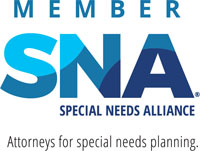Date: December 15, 2011
In our April edition of the Special Needs Estate Planner, Snakes in the Grass, we told our readers about changes to the Medicaid program that were anticipated by the passage of the 2011-2012 New York State budget. Since that date, the New York State Department of Health has been busy promulgating regulations and issuing directives that have helped to clarify and explain many of those changes.
We’ve entitled this edition The Good, The Bad and the Ugly, as there are indeed some positive changes that came about as a result of New York’s continuing efforts to redesign its Medicaid program, as well as some welcome news from the Social Security Administration. On the other hand, there are some bad and downright ugly aspects of the redesign, mainly in the area of expanded estate recovery for individuals who were receiving Medicaid benefits at the time of their death, a topic which was the subject of emergency regulations issued by the Department of Health in late September.
But in the spirit of staying positive, let’s start with the good…
The Good
Changes to the Medicaid Buy-In Program
Effective October 1, 2012, the resource allowance (i.e. the amount that a Buy-In participant can retain in his or her own name without impacting Medicaid eligibility) increases from $13,800 to $20,000 for single individuals. For married individuals, the resource allowance increases from $20,000 to $30,000. That’s a pretty significant increase, especially when combined with the change in the way that retirement related accounts are treated.
The new law attempts to simplify the treatment of retirement accounts in the Medicaid application and recertification process. The treatment of various tax-deferred assets (referred to generically as ‘retirement accounts’) has been a complicated and frustrating part of the Medicaid process for individuals with disabilities who are able to maintain full-time employment. These individuals have been able to accumulate funds in a number of different tax-deferred accounts, including individual retirement accounts (IRAs) and 401(k) plans.
While funds held in a work-related account (such as a deferred compensation account or 401k) have always been disregarded in determining eligibility, other accounts (such as IRAs) have required the computation of premature minimum withdrawals and the development of fairly complicated Medicaid income budgets in order to maintain eligibility.
The Medicaid program purports to simplify the process for those who are able to work. As outlined in a recently issued directive from the New York State Department of Health (DOH), individuals with retirement accounts that are not connected to current employment (such as IRAs and 401(k) plans deriving from prior employment) no longer have to take minimum distributions from those accounts. In other words, they are “exempt” and can remain intact without affecting eligibility.
A word of caution is warranted here. While the directive from DOH is pretty clear on retirement accounts that can be directly traced back to prior employment, it is less clear on other tax-deferred assets such as deferred annuities. Our informal communications with DOH lead us to believe that this exemption will be applied somewhat restrictively, so if you are preparing an application or recertification for a Buy-In participant with tax-deferred assets other than a 401k, deferred compensation plan, or traditional rollover IRA, some professional assistance is warranted, at least for the first application or recertification filed under the new rules.
Autism Insurance Reform Enacted in New York State
On November 1, 2011, Governor Cuomo signed into law what is being called one of the most comprehensive insurance reform bills in the United States. Assembly Bill 8512 requires state-regulated health insurance plans to provide medically necessary coverage for the screening, diagnosis and treatment of Autism and Autism Spectrum Disorders in children and adults. Included in the required treatments are behavioral health treatments, psychiatric care, psychological care, communication devices and under certain circumstances, therapies (speech, occupational, physical, etc.).
We know this is a victory for many of our families who spend countless hours and dollars on an annual basis supplementing the services that are provided through their child’s individualized education program (IEP) and/or their child’s individualized family service plan (IFSP). One of the stated purposes of this bill is to require insurance coverage for services provided outside of an educational setting where services are prescribed by a licensed physician or psychologist. The new law goes into effect on November 1, 2012.
While this bill is limited in its applicability (in that it only applies to state-regulated health insurance plans, and some of the required coverage is conditional), the bill is a positive step in providing support and assistance to families who experience the impact of autism and autism spectrum disorder as a part of their everyday lives. New York State is the 29th state to enact insurance reform mandating coverage for treatment of Autism and Autism Spectrum Disorders.
Social Security Administration Announces First Cost of Living Increase since 2009
Individuals receiving monthly Social Security and Supplemental Security Income (SSI) benefits will receive a 3.6% cost of living adjustment. For traditional Social Security beneficiaries the benefits increase will begin in January of 2012. For SSI recipients, the increase will begin on December 30, 2011.
With this good news from the Social Security Administration comes a bit of bad news as well. It is expected that for many Social Security beneficiaries, the cost of living adjustment increase will be partially or completely offset by increases in Medicare premiums coming in 2012.
The Bad and the Ugly
While the good news comes from a handful of different sources, the bad and the ugly news is derived from a single source: the emergency regulations and accompanying Administrative Directive issued by the Department of Health which implement the expanded estate recovery law enacted by the New York State legislature on April 1, 2011. As a reminder, on April 1, 2011, the New York State Legislature enacted legislation expanding the definition of the word “Estate” for the purpose of enforcing recovery against the assets of an individual who received medical assistance (“Medicaid”) under the New York State Medicaid program prior to death (Note: ‘recovery’ means that the Medicaid program can file a claim to be repaid for its past expenditures).
Many readers will recall that prior to the enactment of this legislation, the New York State Department of Health, through the local social services districts, were only allowed to seek recovery against individually owned assets of a Medicaid recipient (i.e., “probate” assets). Assets that passed outside of the probate process were not subject to recovery for past Medicaid expenses.
Under this new legislation, the definition of “Estate” has been expanded to include interests such as jointly held bank accounts and brokerage accounts, interests in revocable trusts, and, most significantly for our clients, interests held in the form of a life estate in real estate.
This change in legislation and the actions that we expect to be taken by the New York State Department of Health will impact much of the planning that has been done over the last several years, as the legislation did not “grandfather” interests created prior to the passage of this legislation. Therefore, for an individual who receives Medicaid and then passes away after September 8, 2011, any joint interest, life estate interest, or other applicable interest of the Medicaid recipient (potentially including interests in retirement accounts) that exists at the time of death may be subject to these new expanded estate recovery provisions. We believe that this legislation will be subject to many legal challenges over the next several years, and it will be at least that long until some of the significant issues regarding the scope of this law will be straightened out.
Despite the fact that it will take some time for the dust to settle, we believe it is prudent for our readers to review their existing planning to determine if any updates, revisions, or a change in the way assets are held is warranted at this time. We encourage this review whether the work was done with our office or elsewhere. Of primary importance is that our readers seek advice from counsel who are competent in the areas of Medicaid and Long Term Care Planning. Failing to do so can have disastrous financial consequences for other members of the family.
This newsletter is not intended as a substitute for legal counsel. While every precaution has been taken to make this newsletter accurate, we assume no responsibility for errors or omissions, or for damages resulting from the use of the information in this newsletter. If you would like to be removed from our distribution list, please email us or call us at (518) 881-1621















